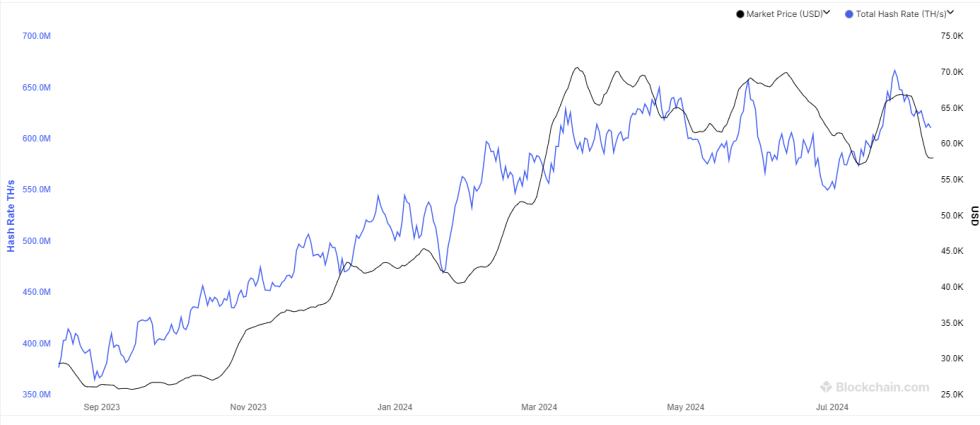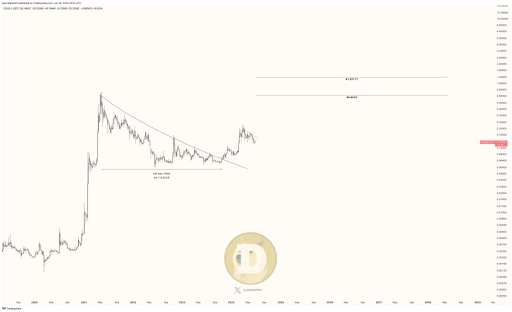On-chain data shows the Bitcoin mining hashrate has continued its decline as the price of the cryptocurrency itself has seen a setback.
7-Day Average Bitcoin Mining Hashrate Down Over 8% Since All-Time High
The “mining hashrate” refers to an indicator that keeps track of the total amount of computing power that miners have currently connected to the Bitcoin blockchain. This metric is generally considered to represent the current situation of the BTC miners.
When the value of the indicator rises, it means new miners are joining the network and/or old ones are expanding their facilities. Such a trend implies the chain is looking attractive to these chain validators.
On the other hand, a decline in the metric suggests some miners have decided to disconnect from the network, potentially because they are no longer finding BTC mining to be profitable.
Now, here is a chart that shows the trend in the 7-day average Bitcoin mining hashrate over the past year:
As displayed in the above graph, the 7-day average Bitcoin mining hashrate had surged to a new all-time high (ATH) near the end of last month, but since then, it has been observing a constant decline.
The ATH occurred as the BTC price rallied up, and the drawdown in the metric coincided with a period of bearish momentum for cryptocurrency. The reason behind this close relationship is the fact that miner revenue is very much tied to the asset’s price.
These chain validators make their income from two sources, transaction fees and block subsidy, but the latter of the two has historically dominated their revenue.
The block subsidy, which miners receive as compensation for solving blocks on the network, is given out at a fixed BTC value and also at a more or less fixed time interval. This means that the only variable related to it is the USD price of the cryptocurrency.
When the asset’s value goes up, so does that of these rewards, and hence, that of the miner revenue. As such, miners tend to follow the coin’s trajectory when it comes to adding or removing hashrate.
Interestingly, though, while Bitcoin had recovered above the $62,000 level earlier, the hashrate didn’t see any reversal, perhaps because the miners didn’t think the increase would last. Indeed, they may have been right, as the asset has retraced some of its recovery during the past day.
One consequence of the constant mining hashrate drawdown is that the network is set to see a negative difficulty change in its next scheduled adjustment.
The difficulty is a feature of the Bitcoin blockchain that controls how hard miners would find it to mine on the network. The existence of the difficulty is what allows for the block subsidy to be given out at fixed intervals.
When the miners add hashrate, they naturally become faster at mining, and thus, they churn out blocks at a faster pace. To counteract this, the network ups the difficulty just enough to slow the miners down to the standard 10 minutes per block rate.
As the miners have been decreasing their hashrate recently, the block time has been slower than usual. The Bitcoin blockchain will now decrease the difficulty by over 4% to make things easier for the validators.
BTC Price
At the time of writing, Bitcoin is trading at around $59,700, up more than 19% over the past week.
Bitcoinist.comRead More



